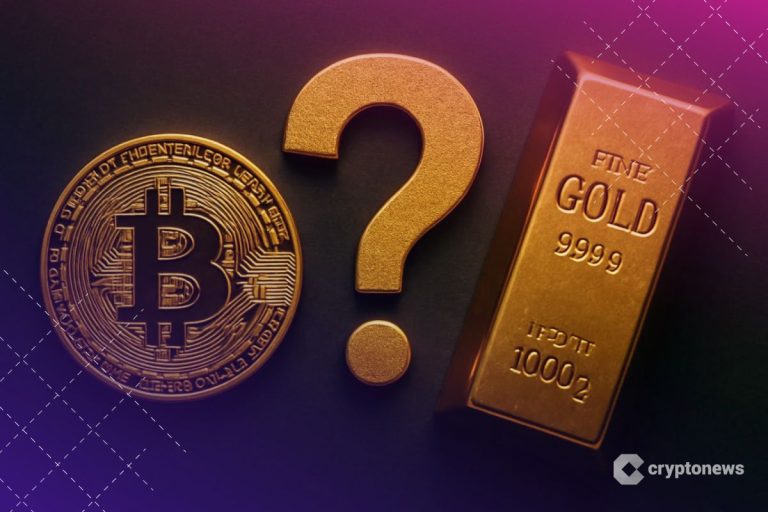The discussion surrounding Bitcoin and gold as stores of value has been ongoing for years, and is gaining new relevance amid geopolitical tensions and high inflation. While gold has traditionally been regarded as a safe haven, more and more professionals now view Bitcoin as the superior alternative. This is shown in a new infographic from Cryptonews.
As the infographic illustrates, public interest still clearly favors gold. Just a few weeks ago, the Google Trend score for the search term “buy gold” in Germany reached a five-year high of 100 and currently stands at 64. By comparison, “buy Bitcoin” rose during the same period only from 11 to 27 points.
The graphic shows the relative search volume (Google Trend score) for “buy Bitcoin” and “buy gold.” Germany, five-year review, scores evaluated separately. Source: trends.google.de
The current high demand for gold is no coincidence. The precious metal has shown exceptionally strong performance over the past twelve months: Measured in US dollars, the price of gold rose by 43.3 percent – a remarkable figure for such a capital-denominated asset. Bitcoin recorded a slightly higher gain of around 48 percent during the same period, but with significantly greater volatility and a much shorter history.
Twelve-month return comparison. Source: Coingecko; Finanzen.net
In the ranking of the largest investment assets by market capitalization, gold clearly tops the list with about $27.6 trillion. Bitcoin, just behind silver, currently holds the eighth position.
The enormous size of the gold market could even prove to be a structural disadvantage in the long term. Moreover, and this may be even more decisive than the sheer market capitalization itself, is the ongoing new supply. While gold continues to expand annually through continuous mining, Bitcoin’s supply is strictly limited by its algorithm.
As the infographic shows, the value of newly mined gold in 2024 amounted to around $680 billion, a figure that requires consistently high demand to maintain stable prices. Bitcoin’s annual new issuance, by contrast, currently stands at about $24 billion.
This structural scarcity means that even relatively small capital inflows can trigger significant price movements. Bitwise CEO Hunter Horsley puts it succinctly: “Gold needs many new buyers to keep prices stable. I believe Bitcoin will be the better store of value.” An assessment that an increasing number of industry observers now share.
As the infographic shows, people aged 18 to 29 already invest more frequently in cryptocurrencies than in gold—a trend that continues in the 30–39 age group. Only from around age 50 does this ratio reverse: in the 50–59 age cohort, traditional precious metals like gold and silver once again dominate. This comes from a recent survey highlighting the differing investment preferences between generations.
As the infographic indicates, gold and Bitcoin have reacted very differently to geopolitical and economic key events in recent years. In the short term—meaning within the first ten days after an event—Bitcoin generally displayed greater volatility and significantly sharper movements up or down. While the precious metal often rose moderately during crises, the cryptocurrency sometimes saw double-digit gains in periods of heightened uncertainty, such as after the U.S.–Iran escalation in 2020 or during the regional banking crisis of 2023.
Over the longer term, viewed over 60 days, the picture becomes more nuanced. In several cases, Bitcoin showed much stronger increases than gold, such as after the 2020 U.S. election or more recently following U.S. tariff announcements in spring 2025.
This suggests that the cryptocurrency increasingly functions as a speculative but potentially higher-yield crisis indicator, while gold continues to play its role as a defensive anchor of stability. Not without reason, more and more experts share a long-term bullish outlook for Bitcoin.
The post Infographic: Bitcoin vs. Gold — Pros Turn to BTC as Older Investors Stick With Gold appeared first on Cryptonews.

